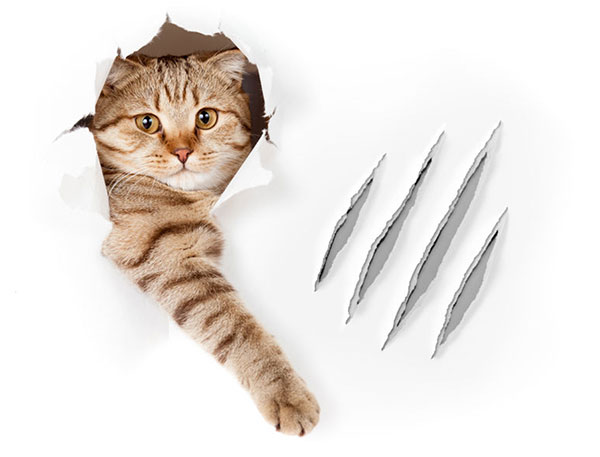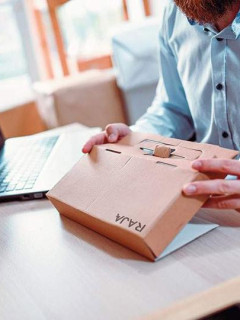Covid-19 brought a lot of change to businesses and shops. One of those notable newcomers are transparent prevention screens. You can find them at counters, receptions, desks, and so on. Such a prevention screen is usually made of acrylic (also called Plexiglas®). Purchasing and installing them is only half the battle. Maintaining them constitutes the other side of the story. That is why we collected some tips here to make it easier to keep your acrylic screen clean. And at the end you will find a series of facts and figures for those who want to know more; because acrylic really is something special!
Manual for cleaning acrylic
► What do you need?
- Plexiglas cleaner (in spray can)
- Microfibre cloth
- Optional: window squeegee or chamois cloth, hair dryer, pressure washer (with steam jet).
► How do you polish acrylic?
-
Step 1: first blow away heavier dirt with a hairdryer. This will prevent the worst scratches. Remember to put the hair dryer on a cold setting. Hot air can damage the acrylic.
-
Step 2: Now remove finer particles of dirt with plexiglass cleaner. This product is specially designed for cleaning acrylic surfaces and is the safest solution. It is 100% natural and prevents dullness and yellowing. In addition, it makes your surface anti-static which is an important consideration for an acrylic screen.
-
Step 3: Afterwards, wipe the acrylic with a wet microfibre cloth. Microfibre holds dirt and dust best, reducing the risk of scratches. Make sure not to apply too much pressure and do not scrub. In doing so, rinse the cloth regularly.
-
Step 4: Do not let the surface dry by itself. Water spots may remain and you will have to repeat the cleaning process. To remedy this, you can use a window squeegee or chamois cloth, for example.
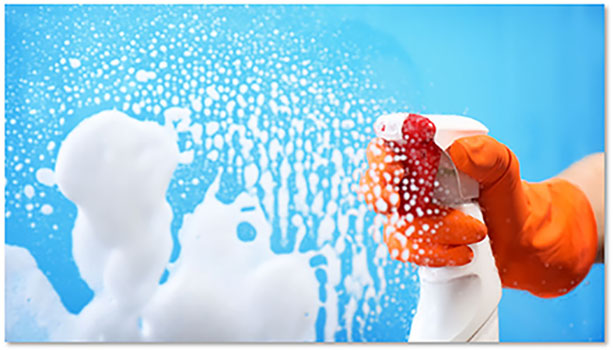
► How to prevent static charge?
It is important to know that Plexiglas® is sensitive to static charge. What exactly does that mean? When you clean the plate with a microfibre cloth, static electricity will be created, attracting dust particles to the plexiglass®. When rubbing, this can cause scratches. To avoid this, it is best to use a plexiglass cleaner that makes the surface antistatic. The dust particles will then stick nicely in the microfibre cloth and will not damage your plexiglass®.
► How to make acrylic clear again?
The easiest way is to polish the surface. There are special polishing pastes on the market for this purpose that can be used for all types of acrylic. Always proceed exactly according to the manufacturer’s instructions for use.
► How do you clean large surfaces of acrylic?
If you have large acrylic sheets outside, a high-pressure cleaner is a good solution. It works particularly well for heavy soiling. You can set the pressure of the steam jet yourself between 50 and 100 bar. The temperature of the water should not exceed +70 °C. Do not wipe the acrylic dry afterwards (because then you create static charge) but let it dry by itself or use a window squeegee.
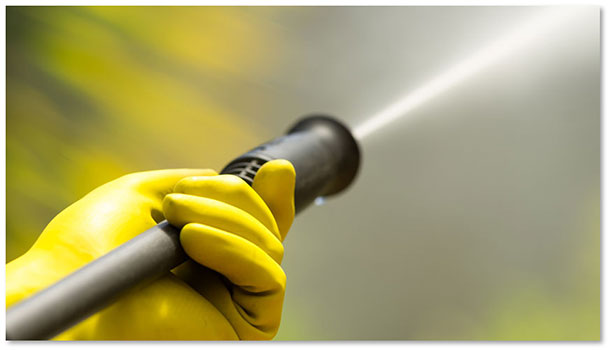
► Which polishing temperature is suitable for acrylic?
Extruded plexiglass® (XT) can withstand up to +70°C while moulded plexiglass® (GS) can withstand up to +80°C. When using a pressure washer (with a steam jet), it is important to take this into account. If you are not sure whether you have an XT or a GS plate in front of you, it is best to keep the temperature below +70 °C.
► Which cleaning agent is suitable?
Acrylic is a sensitive material when it comes to cleaning. You can already use the following substances with confidence:
- Light to medium alkalis (base),
- Agents that are resistant to acids,
- Greases and oils.
The following substances are not compatible. They can even seriously damage your acrylic and cause irreparable dullness.
- Organic substances,
- Acetone,
- Benzene,
- Ethanol,
- Alcohol,
- Petrol,
- Dilutions of synthetic resin products.
What exactly is acrylic or plexiglass®?
Acrylate is a shortening of polymethyl methacrylate (PMMA). This chemical compound is a concoction of acetone, methanol, hydrogen cyanide and sulphuric acid. A perfect compound for plastic, not so excellent as a summer cocktail recipe.
Compounding this PMMA mixture under the right conditions creates a liquid emulsion. When this emulsion cools, you get a transparent sheet of plastic that we call Plexiglas® or acrylate. You can divide it into 2 categories according to the cooling process:
| Cast plexiglass® (GS) | Extruded plexiglass® ( XT) |
| After the production process, the emulsion is poured out in the form of a sheet. The emphasis here is on thickness rather than length or width. The result is a less scratch-sensitive sheet. | First, the emulsion is squeezed out via an extruder (nozzle). Then, the emulsion is spread according to the desired dimensions. Here, the emphasis is on length or width. XT sheets are cheaper than GS sheets. |
- The brand 'Plexiglas®' was invented by German Otto Röhm in 1933?
- The first PMMA prostheses were implanted in 1959?
- PMMA is fully recyclable? It can be remelted into new plastic applications just fine.
Seven things you need to know about acrylate
► Strong
A sheet of acrylic can withstand 30 times more weight than a sheet of glass. In fact, acrylic/plexiglass can withstand more taps and knocks than glass. Glass will break while acrylic is more likely to bend.
► Glass (clear)
Although glass and acrylic are very similar, there is a clear difference in transparency. Glass surfaces reflect a lot of light, while acrylic barely does. In short, acrylic is more transparent than glass. So it’s safe to say that the expression “crystal clear” is a bit outdated.
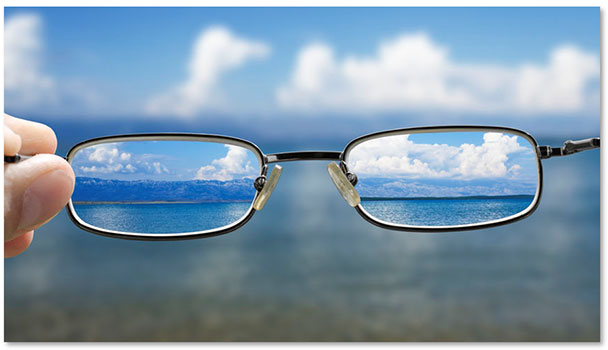
► Soundproof
In addition to office spaces, Plexiglas® is also used on café and restaurant terraces to muffle traffic noise. In addition, Plexiglas® is highly resistant to weathering.
► No UV!
UV protection also fits into the list of useful properties of acrylic/plexiglass. Acrylic does not allow UV rays to pass through, which means the screen will not discolour, unlike glass.
Note: cast plexiglass® (GS) is fully UV-resistant while extruded plexiglass® (XT) can show internal cracks due to the sun after a few years.
► Thermoplastic
Acrylic can be easily remelted to create a new shape. Moreover, it cools down easily afterwards. You can repeat this cycle several times without the acrylic losing its quality. So in fact, this makes acrylic perfectly recyclable.
► Sawing, drilling and painting
You can easily saw and mill figures out of acrylic. Of course, you can also drill holes easily. You can even paint it. As with maintenance, with paint you have to be careful and follow the right procedure.
► Scratch-sensitive
Acrylic has a softer texture than glass. Although this provides more advantages than disadvantages, you should still bear in mind 1 disadvantage: scratches will occur more quickly if you don’t handle your screens with care. This is precisely why you should maintain and clean your screens with extra care.
